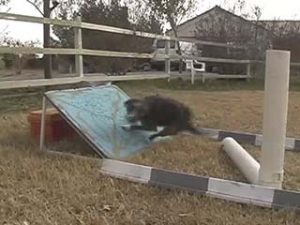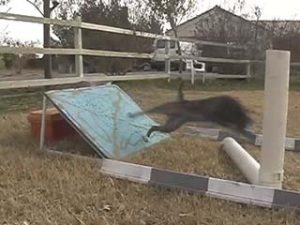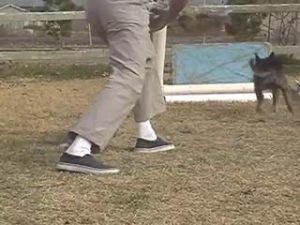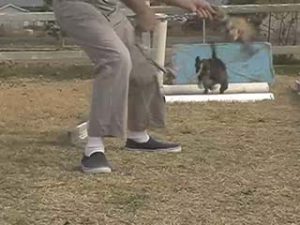ASSOCIATIONS, CONDITIONING AND STRATEGIES
The rules we use to learn from language are very different from the rules that create success when we are learning from reality for ourselves or when we are teaching a dog to learn. For example, we learn sequences from start to finish using language. If we’re baking a cake it might be Step 1: Put 2 cups of flour in the mixing bowl. But if I’m learning to jump off a bridge into a river, I start on a dock and learn how to hit the water first. I start with the last thing and get it right. We don’t expect to start to learn by jumping off a bridge, and recipes don’t start with ‘Put on the oven mitts to take the cake out of the oven’. But when we are teaching a dog, that is what we are doing. If you want this cake then you have to put on the mitts. If you want to tug then you have to go over the jump. We tie a condition to a motivator and then we back-chain additional conditions because for every step, for each progression, the motivator has to come last. We get good at entering the water and then we try jumping from higher, step by step, same idea. This is very different from the way we learn using language. To become effective in training we need to understand how we solve problems when we are learning by observing the results of our experiences, without language, because this is how the dog learns.
There are actually two distinct ways to learn from experience and observation (LEO) and their rules are just as different from each other as they are from the rules of language.
Picture LEGOs . I want to put together a building. There are all kinds of parts that I can combine to build pretty much any size and shape of building I can imagine. When I need to add some doors and windows I’m not going to build them, they have all kinds of prebuilt doors and windows that are far better than anything I can construct from parts. Next I need to apply strategies, techniques that prevent my roof from caving in. These three characteristics; advanced complex behaviors for essential purposes, building blocks that can be manipulated, sequenced and combined to create everything else possible, and strategies that solve and simplify difficult problems, are genetically inherited for learning from experience and observation by all animals. Genetics loads the gun, environment pulls the trigger.
ASSOCIATIONS
The prebuilt parts rule. They make things functional fast. These are the connections in our brain that link a recognized pattern to a known response. They can be inherited or created and new associations are learned quickly. For a dog being trained a new behavior using this style of learning, reliable performance can be obtained from three successful repetitions in a row and it is the fastest way to achieve results. A common use of this is clicker training an offered behavior. The dog does something like scratch its nose. You click and reward it. The dog repeats it and gets clicked and rewarded. You both do it again and then after three successful repetitions you are ready to attach a cue to it.
When creating a behavior you design the situation and provide the motivation that results in the dog presenting it. The objective is to have the behavior associated with a sound, body language or a physical object. You set up an experience where the dog will most likely succeed. First repetition the dog guesses successfully and gets a reward, second rep the dog repeats the behavior and gets another reward so it knows it guessed correctly. Now the dog is pretty confident, you can see it in their demeanor, and when they succeed a third time, once again, the association can be permanently established and given a unique identifier, a cue. Sometimes it is necessary to provide the space for the dog to fail so that it can distinguish the correct behavior, which can add a few repetitions.
Now you can proceed to the next step where you change one thing to advance the dogs behavior closer to the desired outcome. Once again you create a situation where the dog is most likely going to succeed. The dog can quickly step through creating associations and advancing sequences using this pattern.
But this is where an important rule for advancing associations comes in. When you extend the behavior you are building by making changes the meaning of every established cue, body language, verbals and visuals, must remain the same. You cannot change the associations you have already established without confusing the dog and reducing their value. In LEO, reality does not contradict itself and in training everything should have one meaning. Established knowledge does not change, it does become better understood. This is built into the dogs expectation.
To a young dog adding distance, whether between the dog and person or the dog and an object, is the same as adding a new behavior and usually requires a few iterations. An experienced dog often learns to add distance in a single attempt. In the literature I have found numerous references to a dog being conditioned in a single repetition for a variety of behaviors. Once cues and associations have been established dogs can throw them together like we throw words together in a sentence.
CONDITIONING
Placing a cone on the front corner of a flyball box to force a dog to turn tighter is a simple example of using conditioning to learn. With this style of learning you create a situation where the dog cannot fail to perform the behavior. Through repetition the dog eventually does the behavior reliably and the training aids are slowly shaped out. In more complex situations conditioning is used to replace previously undesirable behaviors with new behaviors. To be permanently effective training usually requires advanced techniques such as variable reward schedules that take a significant amount of time.
We can use conditioning to learn how to do anything we are capable of. For example placing, sequencing and combining finger movements to play a musical instrument. The repetitions we use to perfect timing and movement are a voluntary form of learning by conditioning and it is the way they are meant to be used.
STRATEGIES
New research on dogs is uncovering advanced strategies in the dogs repertoire that are applied to learning by conditioning. Visual learning, their ability to mimic, Do As I Do, has been clearly demonstrated by the Family Dog Project in Budapest Hungary, the largest dog research group in the world, and it is one of the most powerful tools in reducing the number of repetitions required to learn an ability. Find someone that knows how to do what you want to learn and copy their behavior. The researchers did not teach the dog to mimic, it inherited the ability. They created a situation where the dog recognized that we also know how to imitate and that it is an activity we can do together. That’s a very high level of understanding of a different species. Fifteen years ago virtually the entire canine research community expressed the opinion that there was no research demonstrating the dogs ability to perform visual learning, and yet some dogs can recognize it in us.
Here’s what Wikipedia says about Chaser the Border Collie:
Chaser could identify and retrieve 1,022 toys by name, which was the result of a years-long research effort initiated by Pilley on June 28, 2004. Pilley documents the following milestones as Chaser’s vocabulary grew over time: 50 words at 5 months, 200 words at 7.5 months, 700 words at 1.5 years, and 1,000+ at 3 years.
Chaser began to understand that objects have names at five months of age. At this point, she became able to pair a novel object with a novel name in one trial, although rehearsal was necessary to log it into her long term memory. She recognized common nouns such as house, tree, and ball, as well as adverbs, verbs and prepositional objects. Based on that learning, she and her owner and trainer Pilley continued her training, demonstrating her ability to understand sentences involving multiple elements of grammar, and to learn new behaviors by imitation.
Dogs from a variety of breeds have demonstrated the ability to mimic but not all dogs can learn it.
Using the same name for different objects would have made it very difficult for Chaser to learn the strategy we are using and significantly diminished her ability to use names. Chaser also demonstrates that dogs can make a virtually unlimited number of associations to verbal and visual cues. I have stopped treating my props as merely physical objects and started giving them precise unique meanings and I no longer use the same prop for two different purposes. That way I can work on combining them in different ways to create new behaviors.
The only animal that has evolved a lot of sophisticated pattern recognition and strategies specifically creating an understanding of humans is the dog. Apparently different dogs have different abilities. Applying this in training is not very effective with any other species.
Examples Using Training g-Whiz on the Ramp
Our dog g-Whiz was trained mainly by creating, advancing, sequencing and combining associations where each step required very few repetitions. Prior to this video I nailed down the ramp and placed the stride regulators. I sent Gee to the ramp twice and then remembered that I needed to video and that I wanted to add the vertical post. It has no effect whatsoever on Gee’s turn but Tooie’s team uses it so I wanted him to get used to it.
From Gee’s perspective I sent him twice without the post and then added the post. This was the first time I added a prop where I wanted him to ignore it. He made the wrong choice and went around it. So I didn’t reward him and without hesitation sent him again and as you can see without hesitation he made the correct choice the second time, got rewarded, and never went around the post again.
If I had been concerned about him making the same mistake over again I would have stopped him, reset and focused him and then released him. And if I thought that wouldn’t stop him from making the mistake again I would have removed the stride regulators and done a few turns close up. But I knew that for Gee this was a no-brainer. There are only two choices which he is used to, they are not subtle, and he understands that not getting rewarded means guess again.
If I had wanted him to go around the post then rewarding him would have set that behavior. In this case not wanting him to go around the post required two tries. In one case it could be referred to as conditioning in one repetition or in two repetitions for the other. Either way it had occurred it was a result of me linking a recognized pattern to a choice between two known responses and this is the way g-Whiz was trained to learn. If I had mistakenly rewarded him for going around the post, I would have had to resort to a bit of conditioning to correct the mistake and create the proper behavior.
Typically when training with a flyball team what you would see when he went around the post would be someone placing the post in a better location or adding another barrier such as a person to force the dog to make the right choice as they create a tighter turn. This is necessary because most of their training has relied on conditioning. Making additional changes to the training aids means that you are no longer changing only one thing at a time which forces you to use conditioning, reinforcing the notion that it is necessary. But you can clearly see the advantage of training by advancing associations from Gee’s example.
There are a few other things I would like to point out. This was in 2011, it was Gee’s second training session on the ramp and the first one was months ago. This was the first time I tried using a pair of stride regulators to condition a dog’s take-off point when jumping onto the ramp, so I placed them where I felt they wouldn’t interfere with his run. He jumps from too far away. The top of his arc is a way in front of the ramp which creates poor rotation. The top of his arc should be where he contacts the ramp.
I normally only do two training sessions on the ramp and then transfer the turn to the flyball box. But this time I added a third session to fix Gee’s striding. I moved the stride regulators closer together to set his take-off point closer to the ramp which dramatically improved his rotation. It is still a bit too far for this situation but when he is approaching faster with a flyball box it should be about right. Angling the stride regulators properly doesn’t interfere with their run back. It improves their approach and they tighten their turn because the wider they turn, the further they have to jump to clear them. The next training session will transfer his turn from the 35 degree ramp to a 55 degree flyball box which will increase the speed of his rotation and his propulsion off the box.
Ordering the Sequence
Any time you need to modify an existing behavior you have to condition it to create the desired changes. By properly arranging the order you use to create and advance the associations needed to train a behavior you can eliminate the need to alter what has already been learned which prevents the need to condition.
Here is an example.
It is very difficult to train a tight turn on a ramp in one step. What normally results is a wide turn that needs to be tighten, which is modifying an existing behavior and requires conditioning. A more effective solution is to use associations. You create a 180 degree turn on the ground first and associate it to a physical cue and verbal. This can be done in three two-minute sets and you can add distance and combine a send cue at the same time. Then you combine the behavior, the turn you taught on the ground, with the ramp using the same physical prop and verbal. You now have a reliable, tight 180 degree turn on the ramp in five two-minute training sets with no need to modify anything.
As you advance the development of your behavior, each step gets tied to a new cue. Because they are being replaced the old cues can be dropped rapidly. It’s not like conditioning where modifying the behavior relies on the props or cues and removing them too quickly results in the dog going back to its previous behavior.
Under stress a dog will revert to its original behavior. This is a problem with conditioning that does not occur when you train by advancing associations. If at the first of training a dog begins with a behavior that it thinks is successful then that behavior becomes associated to cues it gets from the situation. We use conditioning to alter the behavior but under stress it has a tendency to go back to what it originally knew as successful because the same cues are still there. But if I have a dog that begins with a problem on the ramp, that problem is associated with the ramp. When the dog is doing a nice turn I transfer it to the box. The only association the dog has with the box is a proper turn and there is nothing to revert to. Also because the turn on the box is experienced as a new behavior it is now linked to the box. I can remove the other cues that created it fairly rapidly, the props on the ground in this case, and the dog won’t change its turn. In the twenty years that I have been training turns this way Tooie has never had a dog do anything but a proper turn in competition, they have never reverted to any previous problems.
When I discuss training times it probably sounds like I think training quickly is important. I don’t. I have experimented quite a bit with this way of training and I have tried everything sensible that I’ve seen other people do. How I’m describing my training is based on one thing. When I got the best results, this is how I got them. Going quicker made things worse and going slower usually did more harm than good. It was our dogs that set the pace. It is just a nice bonus that getting the best result can be very fast.
-
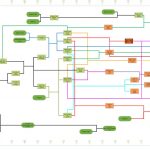
BREEDING TIMELINE with COI
-

ASSOCIATIONS, CONDITIONING AND STRATEGIES
-

Introduction: My Reasons for Blue Cedar
-
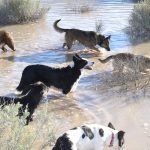
BEHAVIORS
-
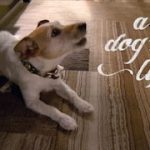
A DOG'S LIFE - THE NATURE OF THINGS
-

MEET DOMESTICATED FOXES - THE VERGE
-
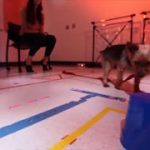
MYSTERIES OF THE ANIMAL MIND - THE NATURE OF THINGS
-
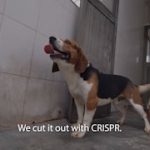
THE GENETIC REVOLUTION - THE NATURE OF THINGS
-
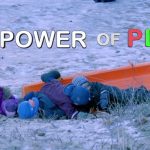
THE POWER OF PLAY - THE NATURE OF THINGS
-

MAN AND DOG - An Evolving Partnership - THE NATURE OF THINGS
-
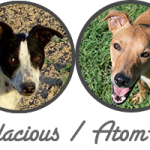
Complimentary Breeding using Dominance
-
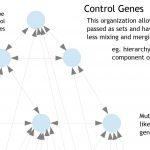
Structural Genes

